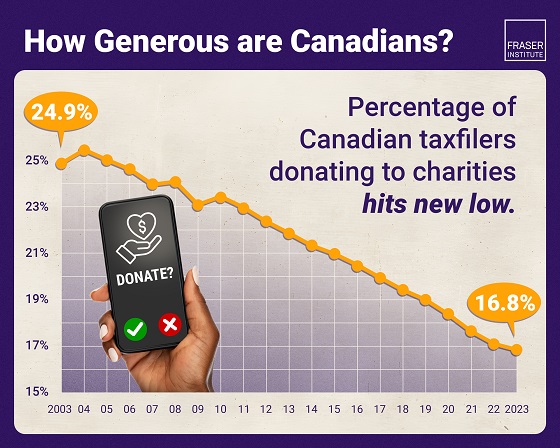Alberta
Hydro-Québec takes partnerships, environmental measures and sharing of wealth to new levels

The Canadian Energy Compendium is an annual Energy Council of Canada initiative which provides opportunity for cross-sectoral collaboration on a topic of shared interest across the Canadian energy sector, produced with the support of Canada’s national energy associations and Energy Council of Canada’s members. The stories contributed to the 2019 edition, Indigenous Energy Across Canada, highlight current conversations celebrating Canada’s dynamic energy sector and encouraging its continuous improvement.
Thanks to Todayville for helping us bring our members’ stories of collaboration and innovation to the public.
Click to read a Foreward from JP Gladu, Chief Development and Relations Officer, Steel River Group; Former President & CEO, Canadian Council for Aboriginal Business

JP Gladu, Chief Development and Relations Officer, Steel
River Group; Former President & CEO, Canadian Council for Aboriginal Business
THE THIRD PHASE OF JAMES BAY DEVELOPMENT: TAKING PARTNERSHIPS, ENVIRONMENTAL MEASURES AND SHARING OF WEALTH TO NEW LEVELS
This article, submitted by Hydro-Québec, will focus on the development of the third phase of the James Bay complex, namely the generating stations namely the Eastmain-1 and Eastmain-1A/Sarcelle/Rupert project. Emphasis will be placed on the development of a new relationship with the Cree that led to an improved project development model.
The Eastmain Complex, the most recent of the James Bay hydroelectric development: Taking partnerships, environmental measures and sharing of wealth to new levels.
When the initial phases of hydropower development in the Baie-James region of Québec was launched in the 1970s, there was no law on the environment, no environmental ministries and no environmental impact assessment process. So consulting affected communities wasn’t on anyone’s agenda and wasn’t yet part of Hydro-Québec’s approach. In the new millennium, with a new phase of development in this region, close-knit partnerships with the Cree Nation have become the cornerstone of project development throughout Québec.
Nadoshtin and Boumhounan agreements paved the way to new developments in Baie-James in the 2000s
The Nadoshtin agreement (2002) between the Crees and Hydro-Québec opened up the possibility of building and operating the Eastmain-1 hydropower project, while the Boumhounan agreement (2002) provided a framework for the Eastmain 1- A/Sarcelle/Rupert project. The key to success for the Eastmain projects was partially diverting the Rupert River’s flow northward.
But Hydro-Québec’s commercial interest in this new project had to be balanced by clear and extensive measures to preserve the surrounding environment and respect host Cree Nation and Cree communities.
In the framework of the Eastmain-1 project, Hydro-Québec made a number of commitments with a view to
- reduce the project’s impacts on the environment
- protect the Cree way of life and encourage partnerships with the Cree communities
- encourage the awarding of contracts to Cree businesses
- promote the training and hiring of Cree workers.
- built local capacity
“…The company wanted to do more than minimize environmental impact; Hydro-Québec wanted community members to see positive gains from the Eastmain developments…”
From the design stage, which was carried out in concert with the Cree, the Eastmain 1-A/Sarcelle/Rupert project incorporated many environmental protection measures, reflecting the Cree traditional knowledge of the community members they consulted. The Cree of Québec were involved in all stages of the project, ensuring they had a voice in how their land would be impacted.

Photo courtesy Hydro-Québec. Yellow sturgeon are raised in a fish hatchery and released into their natural habitat in mid-September, when they have reached a certain maturity. Cree tallymen assist in releasing the fish into the Rupert River in the Baie-James region.
With input from Cree community members, Hydro-Québec devised a combination of dikes and canals to improve water flow, ensuring that the project, which diverts 71% of the river’s flow, flooded only a minimal land area. They also incorporated a substantial ecological in-stream flow and a series of weirs in the river to protect fish habitats, biological diversity, preserve the landscape, and maintain navigation and other activities in the area.
Furthermore, Hydro-Québec signed an unprecedented water management agreement with the Cree to ensure that the modulation of the ecological in-stream flow was managed in a cooperative manner.
Economic spinoffs
In addition to helping preserve the local environment, Hydro-Québec was committed to bringing growth opportunities to the Cree of Québec. The company wanted to do more than minimize environmental impact; Hydro-Québec wanted community members to see positive gains from the Eastmain developments.
Under the Boumhounan Agreement, an extensive participation program built around information and consultation with Cree stakeholders was put in place. It also made funds available for the Cree to finance fisheries, capacity building and traditional activities projects.
When the Eastmain 1A/Rupert diversion project was completed in 2013, the Cree and Hydro-Québec signed the Reappropriation Agreement, giving Cree land users the necessary support to maintain their traditional activities as long as the Rupert River diversion is in operation.
Post-project consultations: ensuring that measures were effective
The COMEX, a joint committee composed of 3 members appointed by the Government Quebec and 2 members appointed by the Cree Nation government, organized consultations with Cree communities to hear their views on the effectiveness of environmental and social mitigation measures put in place for the Eastmain 1A/Rupert diversion project. Approximately 200 members of the Cree Nation from six communities participated in the consultations organized in November 2012.

Photo courtesy Hydro-Québec. Between 2002 and 2005, prior to the impoundment of the Eastmain-1 reservoir, 50 archeologists and Cree workers undertook archeological digs. They discovered 158 sites and their work shows that the Baie-James territory has been occupied by these populations for the last 5,000 years.
The major findings of the COMEX were as follows:
- […]”the Committee is convinced that the Eastmain-1-A and Sarcelle Powerhouses and Rupert Diversion Project will have contributed to greater understanding between all the parties concerned, to greater Cree involvement in the development of the territory, and perhaps to empowering them to achieve their long- term economic and community development goals.”
- “Compared to previous projects carried out in the territory, the Eastmain-1- A/Sarcelle/Rupert project included more adequate and an unprecedented number of mitigation and compensation measures, for both environmental and social impacts. Many of these measures are aimed at helping Cree land users reclaim the territory. A new approach was developed and the Crees have benefited from the partnerships built with the proponent, thereby forging a new relationship.”
- “Hydro-Québec was proactive, exceeding the requirements of the certificate of authorization in an effort to minimize the project’s impacts and ensure greater Cree involvement in environmental and social follow-up activities.”
- “Hydro-Québec went to great lengths to ensure that Aboriginal communities derive benefit from the project.”
A new project development model
The Eastmain Complex – the most recent phase of development in Baie-James – added a potential energy output of 8.7 TWh per year, enough to power more than 500,000 Québec homes. The new relationships that Hydro-Québec and the Cree Nation developed over that period have become models for future energy resource development throughout Québec. With considerable untapped hydropower potential and a strong wind potential in Québec, Hydro-Québec’s new and improved project development model holds great promise for the future of clean energy in northeast North America.

Jacob Irving, President of Energy Council of Canada
The Canadian Energy Compendium is an annual initiative by the Energy Council of Canada to provide an opportunity for cross-sectoral collaboration and discussion on current topics in Canada’s energy sector. The 2020 Canadian Energy Compendium: Innovations in Energy Efficiency is due to be released November 2020.
Click to read comments about this series from Jacob Irving, President of the Energy Council of Canada.
Alberta
Here’s why city hall should save ‘blanket rezoning’ in Calgary

From the Fraser Institute
By Tegan Hill and Austin Thompson
According to Calgarians for Thoughtful Growth (CFTG)—an organization advocating against “blanket rezoning”— housing would be more affordable if the mayor and council restricted what homes can be built in Calgary and where. But that gets the economics backwards.
Blanket rezoning—a 2024 policy that allowed homebuilders to construct duplexes, townhomes and fourplexes in most neighbourhoods—allowed more homebuilding, giving Calgarians more choice, and put downward pressure on prices. Mayor Farkas and several councillors campaigned on repealing blanket rezoning and on December 15 council will debate a motion that could start that process. As Calgarians debate the city’s housing rules, residents should understand the trade-offs involved.
When CFTG claims that blanket rezoning does “nothing” for affordability, it ignores a large body of economic research showing the opposite.
New homes are only built when they can be sold to willing homebuyers for a profit. Restrictions that limit the range of styles and locations for new homes, or that lock denser housing behind a long, costly and uncertain municipal approval process, inevitably eliminate many of these opportunities. That means fewer new homes are built, which worsens housing scarcity and pushes up prices. This intuitive story is backed up by study after study. An analysis by Canada’s federal housing agency put it simply: “higher residential land use regulation seems to be associated with lower housing affordability.”
CFTG also claims that blanket rezoning merely encourages “speculation” (i.e. buying to sell in the short-term for profit) by investors. Any profitable housing market may invite some speculative activity. But homebuilders and investors can only survive financially if they make homes that families are willing to buy or rent. The many Calgary families who bought or rented a new home enabled by blanket rezoning did so because they felt it was their best available option given its price, amenities and location—not because they were pawns in some speculative game. Calgarians benefit when they are free to choose the type of home and neighbourhood that best suits their family, rather than being constrained by the political whims of city hall.
And CFTG’s claim that blanket rezoning harms municipal finances also warrants scrutiny. More specifically, CFTG suggests that developers do not pay for infrastructure upgrades in established neighbourhoods, but this is simply incorrect. The City of Calgary charges an “Established Area Levy” to cover the cost of water and wastewater upgrades spurred by redevelopment projects—raising $16.5 million in 2024 alone. Builders in the downtown area must pay the “Centre City Levy,” which funds several local services (and generated $2.5 million in 2024).
It’s true that municipal fees on homes in new communities are generally higher, but that reflects the reality that new communities require far more new pipes, roads and facilities than established neighbourhoods.
Redeveloping established areas of the city means more residents can make use of streets, transit and other city services already in place, which is often the most cost-effective way for a city to grow. The City of Calgary’s own analysis finds that redevelopment in established neighbourhoods saves billions of taxpayer dollars on capital and operating costs for city services compared to an alternative scenario where homebuilding is concentrated in new suburban communities.
An honest debate about blanket rezoning ought to acknowledge the advantages this system has in promoting housing choice, housing affordability and the sustainability of municipal finances.
Clearly, many Calgarians felt blanket rezoning was undesirable when they voted for mayoral and council candidates who promised to change Calgary’s zoning rules. However, Calgarians also voted for a mayor who promised that more homes would be built faster, and at affordable prices—something that will be harder to achieve if city hall imposes tighter restrictions on where and what types of homes can be built. This unavoidable tension should be at the heart of the debate.
CFTG is promoting a comforting fairy tale where Calgary can tighten restrictions on homebuilding without limiting supply or driving up prices. In reality, no zoning regime delivers everything at once—greater neighbourhood control inevitably comes at the expense of housing choice and affordability. Calgarians—including the mayor and council—need a clear understanding of the trade-offs.
Alberta
The case for expanding Canada’s energy exports

From the Canadian Energy Centre
For Canada, the path to a stronger economy — and stronger global influence — runs through energy.
That’s the view of David Detomasi, a professor at the Smith School of Business at Queen’s University.
Detomasi, author of Profits and Power: Navigating the Politics and Geopolitics of Oil, argues that there is a moral case for developing Canada’s energy, both for Canadians and the world.
CEC: What does being an energy superpower mean to you?
DD: It means Canada is strong enough to affect the system as a whole by its choices.
There is something really valuable about Canada’s — and Alberta’s — way of producing carbon energy that goes beyond just the monetary rewards.
CEC: You talk about the moral case for developing Canada’s energy. What do you mean?
DD: I think the default assumption in public rhetoric is that the environmental movement is the only voice speaking for the moral betterment of the world. That needs to be challenged.
That public rhetoric is that the act of cultivating a powerful, effective economic engine is somehow wrong or bad, and that efforts to create wealth are somehow morally tainted.
I think that’s dead wrong. Economic growth is morally good, and we should foster it.
Economic growth generates money, and you can’t do anything you want to do in social expenditures without that engine.
Economic growth is critical to doing all the other things we want to do as Canadians, like having a publicly funded health care system or providing transfer payments to less well-off provinces.
Over the last 10 years, many people in Canada came to equate moral leadership with getting off of oil and gas as quickly as possible. I think that is a mistake, and far too narrow.
Instead, I think moral leadership means you play that game, you play it well, and you do it in our interest, in the Canadian way.
We need a solid base of economic prosperity in this country first, and then we can help others.
CEC: Why is it important to expand Canada’s energy trade?
DD: Canada is, and has always been, a trading nation, because we’ve got a lot of geography and not that many people.
If we don’t trade what we have with the outside world, we aren’t going to be able to develop economically, because we don’t have the internal size and capacity.
Historically, most of that trade has been with the United States. Geography and history mean it will always be our primary trade partner.
But the United States clearly can be an unreliable partner. Free and open trade matters more to Canada than it does to the U.S. Indeed, a big chunk of the American people is skeptical of participating in a global trading system.
As the United States perhaps withdraws from the international trading and investment system, there’s room for Canada to reinforce it in places where we can use our resource advantages to build new, stronger relationships.
One of these is Europe, which still imports a lot of gas. We can also build positive relationships with the enormous emerging markets of China and India, both of whom want and will need enormous supplies of energy for many decades.
I would like to be able to offer partners the alternative option of buying Canadian energy so that they are less reliant on, say, Iranian or Russian energy.
Canada can also maybe eventually help the two billion people in the world currently without energy access.
CEC: What benefits could Canadians gain by becoming an energy superpower?
DD: The first and primary responsibility of our federal government is to look after Canada. At the end of the day, the goal is to improve Canada’s welfare and enhance its sovereignty.
More carbon energy development helps Canada. We have massive debt, an investment crisis and productivity problems that we’ve been talking about forever. Economic and job growth are weak.
Solving these will require profitable and productive industries. We don’t have so many economic strengths in this country that we can voluntarily ignore or constrain one of our biggest industries.
The economic benefits pay for things that make you stronger as a country.
They make you more resilient on the social welfare front and make increasing defence expenditures, which we sorely need, more affordable. It allows us to manage the debt that we’re running up, and supports deals for Canada’s Indigenous peoples.
CEC: Are there specific projects that you advocate for to make Canada an energy superpower?
DD: Canada’s energy needs egress, and getting it out to places other than the United States. That means more transport and port facilities to Canada’s coasts.
We also need domestic energy transport networks. People don’t know this, but a big chunk of Ontario’s oil supply runs through Michigan, posing a latent security risk to Ontario’s energy security.
We need to change the perception that pipelines are evil. There’s a spiderweb of them across the globe, and more are being built.
Building pipelines here, with Canadian technology and know-how, builds our competitiveness and enhances our sovereignty.
Economic growth enhances sovereignty and provides the resources to do other things. We should applaud and encourage it, and the carbon energy sector can lead the way.
-

 International2 days ago
International2 days agoTrump admin wants to help Canadian woman rethink euthanasia, Glenn Beck says
-

 Local Business2 days ago
Local Business2 days agoRed Deer Downtown Business Association to Wind Down Operations
-

 COVID-192 days ago
COVID-192 days agoTrump DOJ seeks to quash Pfizer whistleblower’s lawsuit over COVID shots
-

 Alberta2 days ago
Alberta2 days agoThe case for expanding Canada’s energy exports
-

 Crime2 days ago
Crime2 days agoU.S. seizes Cuba-bound ship with illicit Iranian oil history
-

 Business1 day ago
Business1 day agoAlbertans give most on average but Canadian generosity hits lowest point in 20 years
-

 International2 days ago
International2 days agoMarjorie Taylor Greene’s ’60 Minutes’ interview reveals power struggle between populists and RINOs
-

 Censorship Industrial Complex1 day ago
Censorship Industrial Complex1 day agoOttawa’s New Hate Law Goes Too Far








